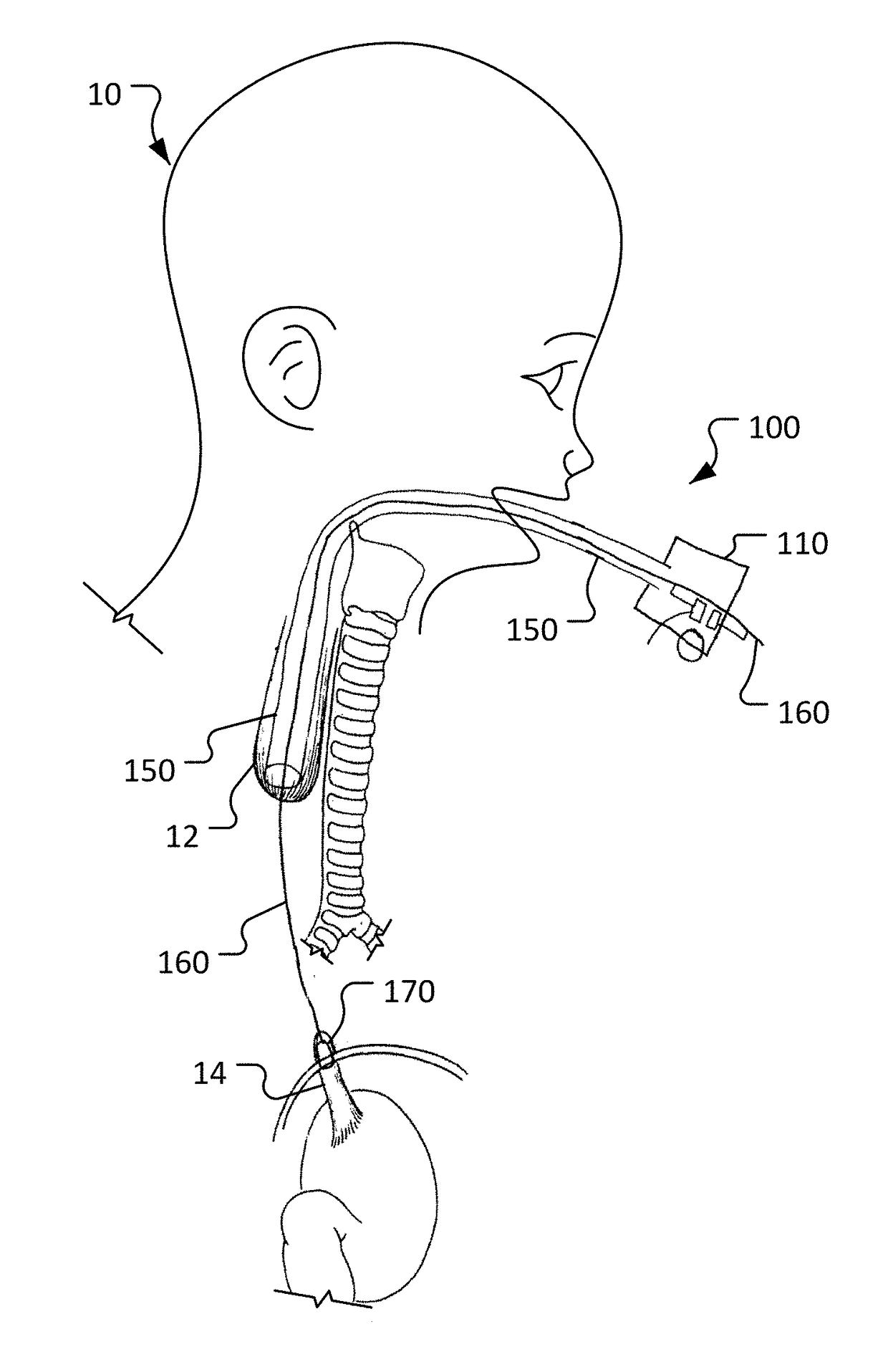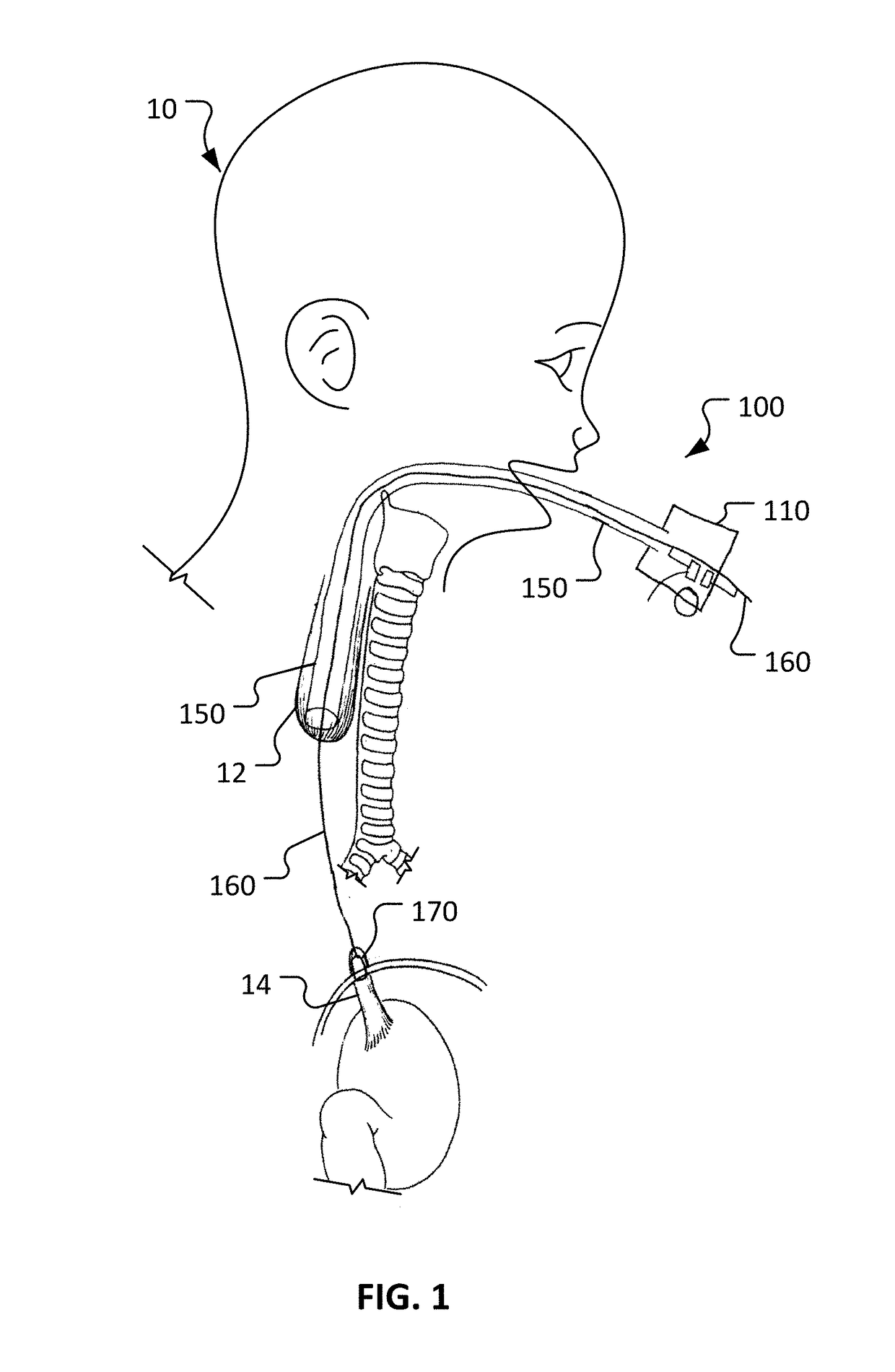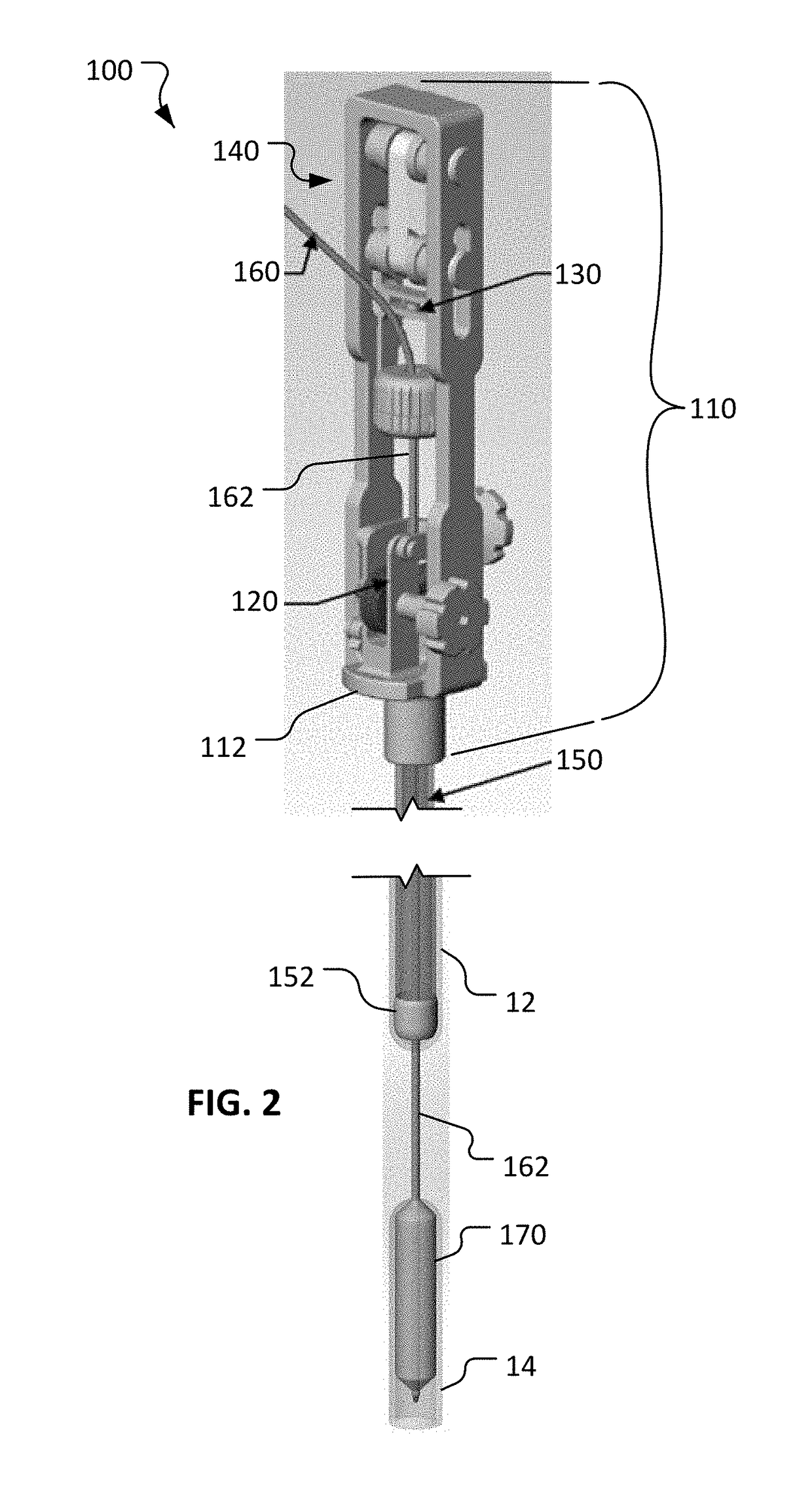Devices and methods for esophageal lengthening and anastomosis formation
- Summary
- Abstract
- Description
- Claims
- Application Information
AI Technical Summary
Benefits of technology
Problems solved by technology
Method used
Image
Examples
Embodiment Construction
[0024]This disclosure provides devices and methods to treat long gap EA, while obviating much of the delay and complexities associated with current procedures. The devices and methods provided herein involve actively stretching the esophagus portions with traction to promote growth of the esophagus portions. Moreover, the devices and methods provided herein allow for a compression anastomosis to occur between the esophageal ends. This eliminates the need for a second operation to suture the esophageal ends together.
[0025]The anastomotic devices provided herein use an oroesophageal tube that is passed through the baby's mouth to apply pressure on the upper esophageal segment. A balloon tipped catheter is passed via the tube through the upper esophageal segment and into the lower esophageal segment. Once the balloon is inflated and secured, traction is applied between the esophageal ends over a period of several days. Once the esophageal ends have grown together, the balloon and oroes...
PUM
 Login to View More
Login to View More Abstract
Description
Claims
Application Information
 Login to View More
Login to View More - R&D
- Intellectual Property
- Life Sciences
- Materials
- Tech Scout
- Unparalleled Data Quality
- Higher Quality Content
- 60% Fewer Hallucinations
Browse by: Latest US Patents, China's latest patents, Technical Efficacy Thesaurus, Application Domain, Technology Topic, Popular Technical Reports.
© 2025 PatSnap. All rights reserved.Legal|Privacy policy|Modern Slavery Act Transparency Statement|Sitemap|About US| Contact US: help@patsnap.com



